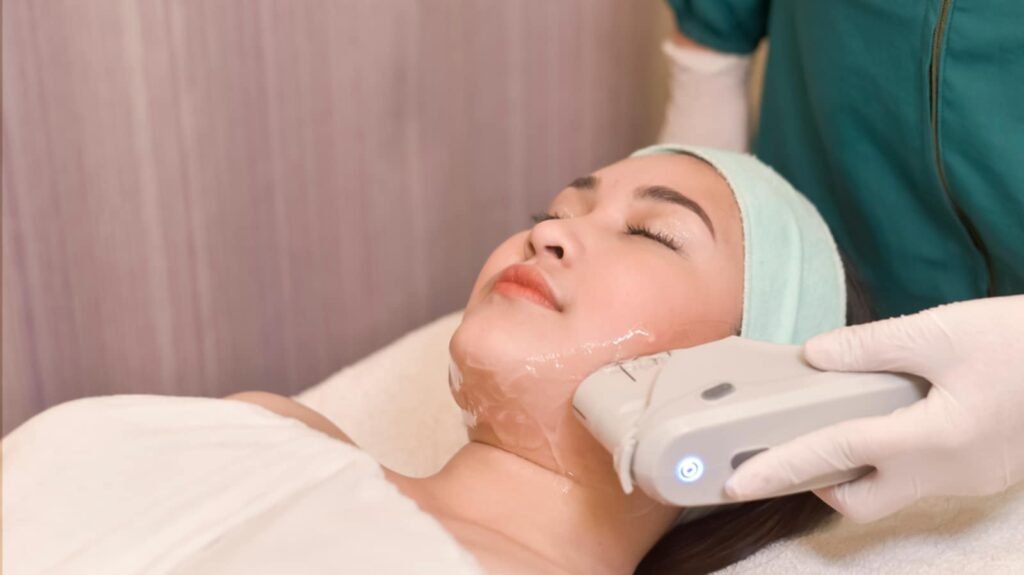The Ultimate Guide to Non-Invasive Skin Treatments: Everything You Need to Know
As the quest for youthful skin continues, non-surgical skin treatments are gaining incredible popularity. Traditional surgical options once dominated the beauty industry, but advancements have paved the way for effective, non-invasive alternatives that boast minimal downtime and reduced risks. In this guide, we explore everything you need to know before diving into non-invasive skin treatments.
Understanding Non-Invasive Treatments
With over 34.9 million aesthetic procedures performed globally in 2023, an increase of 3.4% from the previous year, it’s clear that the beauty landscape is shifting. According to Dr. Geetanjali Shetty, a renowned dermatologist, non-surgical methods witnessed a significant 7.2% rise. This shift indicates that many people are now opting for skin tightening solutions that don’t require surgery.
Why Choose Non-Invasive Treatments?
Non-invasive treatments offer several advantages over surgical procedures, including:
- Fewer Risks: Non-invasive methods are typically safer as they don’t require anesthesia.
- Shorter Recovery Time: Most clients can return to their daily activities immediately after treatment.
- Convenience: Treatments can often be scheduled during lunch breaks or short visits.
When Should You Consider Non-Invasive Skin Treatments?
Signs You Might Need Skin Tightening
The early signs of aging often begin to appear in your late 20s or early 30s. Here are indicators that it may be time to consider non-invasive skin treatments:
- Dynamic Lines: Initial fine lines that later become static, such as crow’s feet or forehead lines.
- Loss of Glow: Diminished radiance due to slower cell turnover.
- Dryness: Flaky skin resulting from reduced oil production.
- Brown Spots: Small pigmentation changes in sun-exposed areas.
- Enlarged Pores: Increased pore visibility around the nose and cheeks.
Age-Specific Recommendations for Treatments
The best time to start non-invasive treatments varies based on individual circumstances. Here’s a breakdown:
-
Late 20s:
- Concern: Early signs of aging.
- Treatments: Preventive RF, Ultherapy, Microneedling, PRX-Plus, HydraFacial.
- Goal: Boost collagen to delay aging.
-
30s:
- Concern: Fine lines and mild laxity.
- Treatments: PRX-Plus, Microneedling with RF, Thermage, light fillers.
- Goal: Maintain skin firmness and brightness.
-
40s:
- Concern: Sagging and volume loss.
- Treatments: Ultherapy, RF, PRX-Plus, thread lifts, fillers.
- Goal: Lift and restore volume.
- 50s and Beyond:
- Concern: Deep wrinkles and severe laxity.
- Treatments: Ultherapy, RF Microneedling, CO2 lasers.
- Goal: Tighten and uniformly rebuild skin structure.
Who Should Avoid Non-Invasive Treatments?
While many can benefit from these procedures, some individuals should approach with caution:
- Pregnant or Breastfeeding Women: Limited safety data.
- Those with Active Skin Infections: Risk of aggravation or spreading infection.
- Individuals with Pacemakers: Especially with radiofrequency/Electric treatments.
- People with Uncontrolled Illnesses: Risks with chronic diseases.
- Those with Sensitive Skin Conditions: Such as eczema or dermatitis.
Popular Non-Invasive Treatments by Area
Skin tightening options vary based on the treatment area:
- For Forehead Wrinkles: Botulinum toxin, PRX-Plus.
- For a Sagging Jawline: Ultherapy, radiofrequency microneedling, fillers.
- For Neck Laxity: Ultherapy, Thermage.
- For Mid-Face or Cheeks: Thread lifts, fillers, HI-FU.
- For Abdomen or Arms: Body RF, Cool Sculpting.
Conclusion
In today’s fast-paced world, non-invasive skin treatments provide a compelling alternative to surgical options, allowing individuals to address signs of aging without the extensive downtime associated with traditional methods. Before pursuing any treatment, consult with a qualified dermatologist to ensure you’re making informed decisions tailored to your individual needs.
For more information on anti-aging practices and skin health, check out American Academy of Dermatology or Mayo Clinic – Skin Care.
This article is intended for informational purposes and is not a substitute for professional medical advice. Always seek your doctor’s expertise regarding medical conditions.


